Think for a moment. Other than in a yoga class, when was the last time you took a full complete breath? Yes, I mean one full complete breath. A long inhalation, all the way from the base of your being to the top of your head, a good pause at the top, and a long exhalation, from the base of your head, down the spine and out to every cell of your being? How about you try that now. Felt good right?
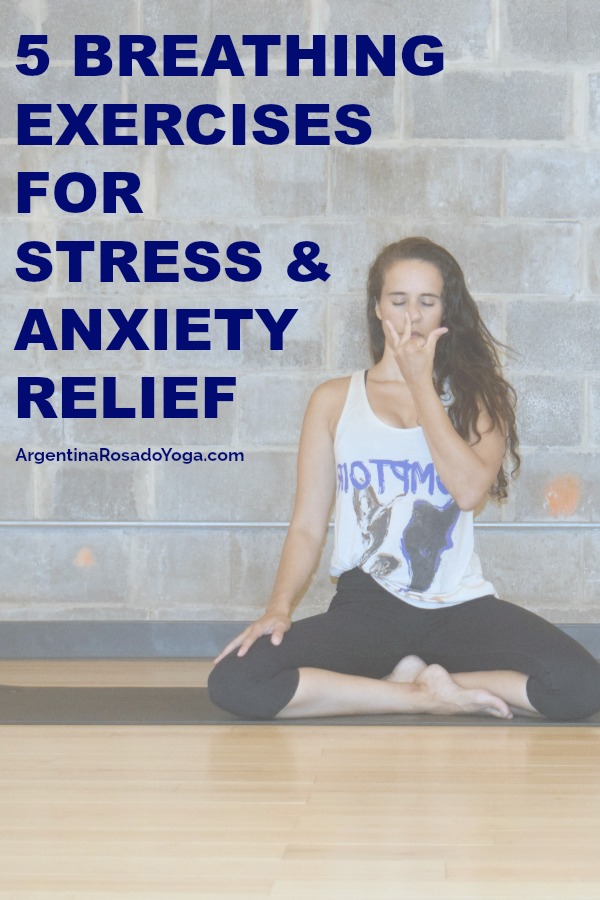
How about if you observe your breathing for about 5 or 10 seconds? Notice that by just observing your breathing, your thoughts automatically go away and you become aware and present. This is because the breath is the bridge between the mind and body. If we observe our breath long enough, the mind eventually transcends and we enter into a deep meditative state where mind, body, and soul become one.
Nowadays, however, we are so busy with our thoughts and hectic lives that we actually don’t breathe properly. Shortness of breath has become more of a subconscious habit that could potentially lead to chronic anxiety and stress related illnesses.
Considering the above, we can say that thought interrupts breath, and breath interrupts thought. Cool stuff!
When we are under a lot of stress, the Sympathetic Nervous System stimulates the fight or flight response within the body, triggering a series of physiological effects within the body, including rapid breathing.
Certain breathing exercises help bring the body and mind into balance by stimulating the Parasympathetic System, the one responsible for eliciting the relaxation response.
In pranayama practices, we control the movement of prana to elicit certain effects within the body and mind. The following breathing techniques are used in meditation and asana practices, and on their own to calm the body and mind.
1. The Full Complete Breath
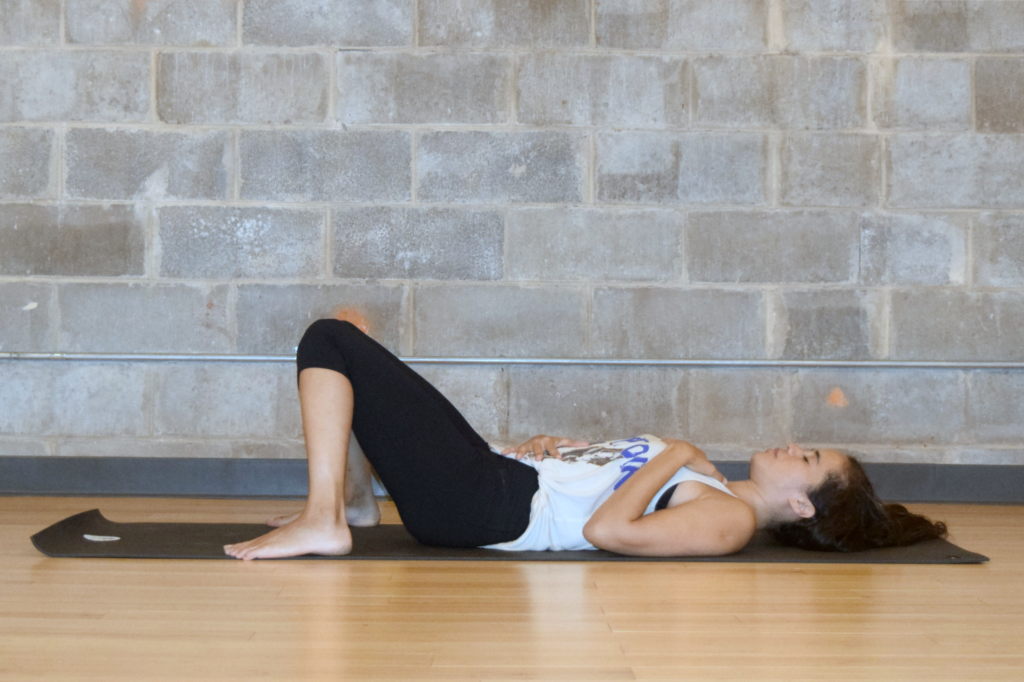
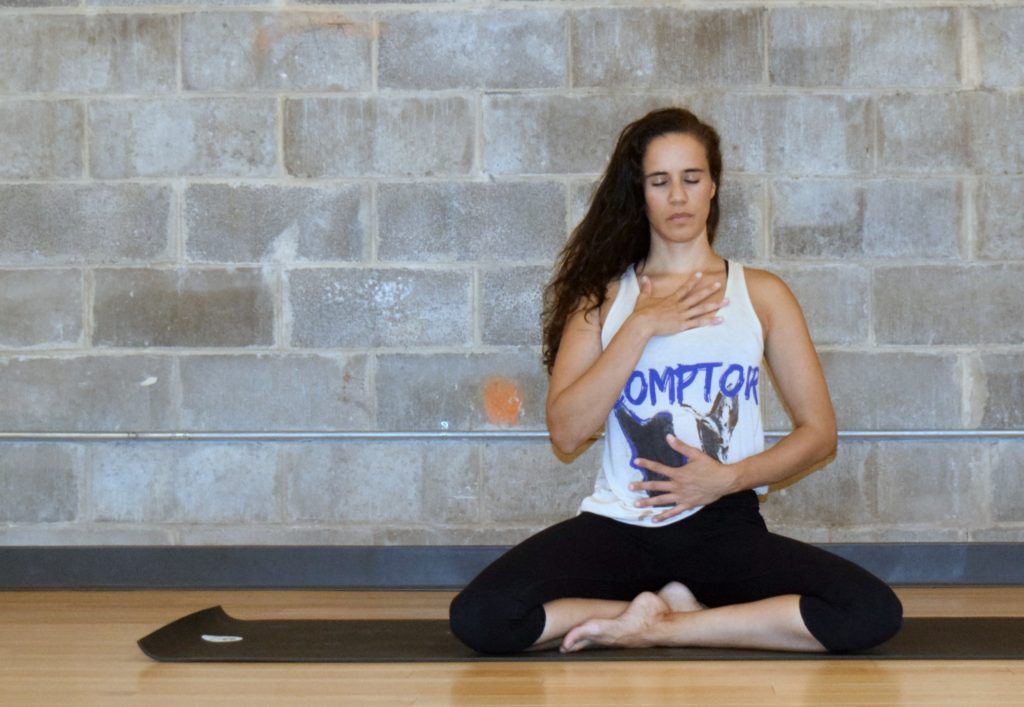
The Full Complete Breath is the act of taking a long inhalation and a long exhalation, while consciously observing the path of air as it goes in and out of the lungs.
How to do it:
Lie down on the back with the soles of your feet on the floor, knees bent. Now, separate your feet as wide as the mat and bring the knees together to touch. Place one hand on your chest and one hand on your belly.
Take a long inhalation and observe and feel how your chest expands as you inhale. Hold at the top as long as you’re able, then take a deep exhalation and notice and feel how your chest draws back as you exhale.
Take a few rounds like this, following the natural path of your inhalations and exhalations.
2. Apa Japa (Repetitive Breathing or Breath Awareness)
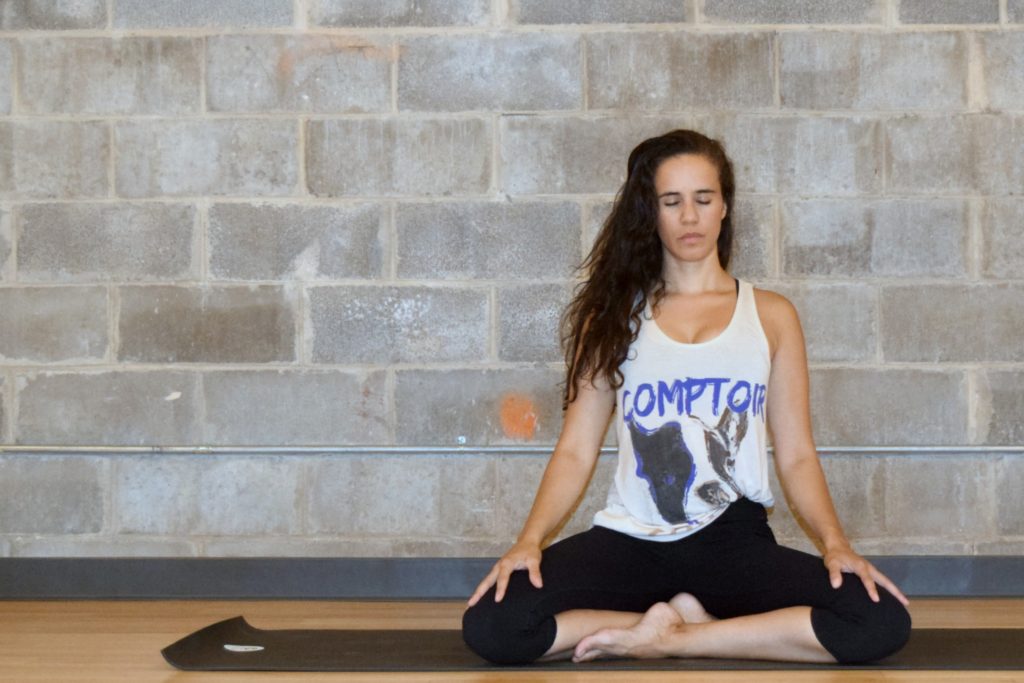
Japa is a meditative practice where something is repeated with awareness. In this case, we consciously repeat and observe the breath in its natural rhythmic form. In more advanced practices, a mantra or affirmation is also included. Although not necessarily the easiest, this is the simplest form of pranayama and therefore great for beginners.
How to do it:
Find a comfortable seat or lie down on the back with the soles of your feet flat on the ground and knees bent. For this practice there is no manipulation of the breath. Bring your awareness to your belly, chest, or nostril area, and without changing the rhythm or quality of your breathing, observe your inhales and exhales.
It’s important not to try and change your breathing pattern. Simply observe. Naturally, you may get distracted and your mind will wander. It’s okay. This is a practice of active concentration and the more you do it, the easier it becomes. Active concentration (also known as Dharana) eventually leads to effortless concentration (also known as Dhyana or meditative state).
3. Krama Pranayama (3-part breathing):
In Krama pranayama, we focus on long inhalations and exhalations that move continuously through the body. When we add pauses to the inhales and exhales, we lengthen the breath and increase breath capacity. This causes the practitioner’s mind and body to become steady and calm. There are 3 ways to practice Krama breathing and each has a different effect.
How to do it:
- Take three pauses on the exhale – This form of breathing is more pacifying and calming and best practiced before sleep and for easing anxiety. Begin by taking a full deep breath (full inhale and full exhale), then take a long inhale, hold it at the top as long as it is comfortable, then exhale one third of the way (pause), another third (pause), for the last third, empty out the breath completely, and pause at the bottom of the breath. Notice that sweet moment after the exhale when everything is blissful and perfect. Follow with a full deep breath (recovery breath), then begin another round of Krama breath. Complete 5-10 rounds.
- Take three pauses on the inhale – This form of breathing is more activating and uplifting and suitable in the morning or before rigorous yoga practices and exercise routines. It can also be used to ease symptoms of depression.
- Take three pauses on both the inhales, and the exhales – This form of breathing expands the breath even more and creates a sense of balance. It’s a great preparation for meditation, before bed, and for calming down.
4. Ujjayi (yogic breath)
Ujjayi means “victorious” breath and it’s the most common breathing technique used during asana practice (yoga poses). It is known for its distinct audible sound made by the constriction of the throat on the inhales and exhales. The breath itself aids with concentration, creates heat within the body, and elicits the relaxation response for more mindful movements and mind body connection.
How to do it:
Keeping your lips sealed, take a long inhale and a long exhale. Now, do the same thing but add a slight contraction around the muscles of the throat. This is the same muscular action as when you fog a piece of glass or mirror (window, your glasses, etc). To give you an idea, the breath should be audible enough that the person next to you can slightly hear it, but not so loud that the person across the room can hear it.
Now, use this same breathing pattern while moving through, or holding poses, or by its own (meaning just sitting down and breathing).
5. Alternate Nostril Breathing
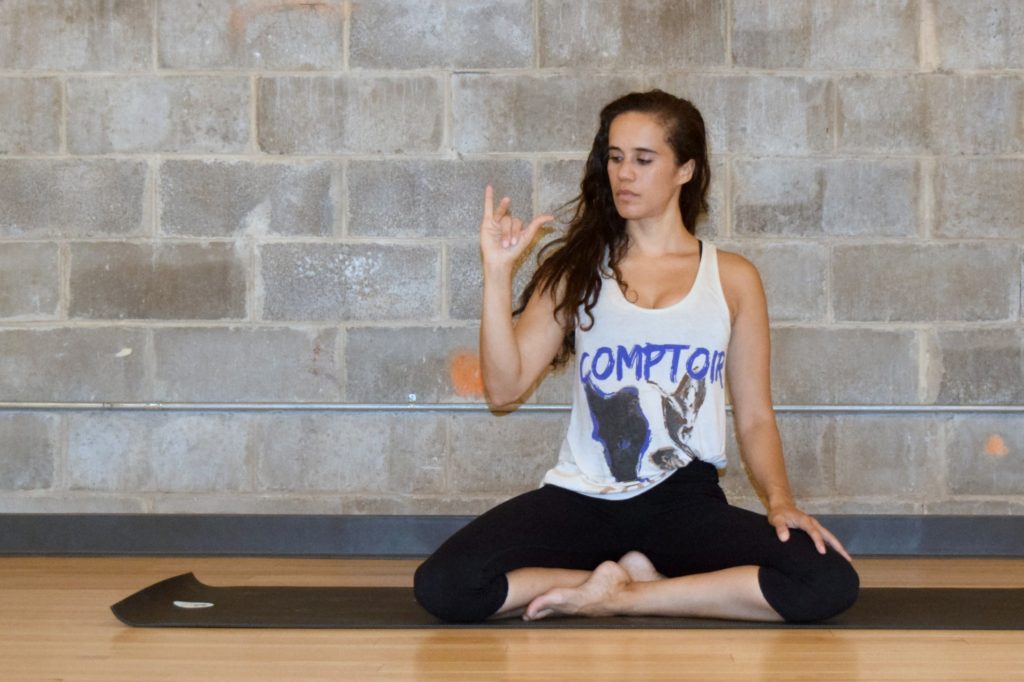
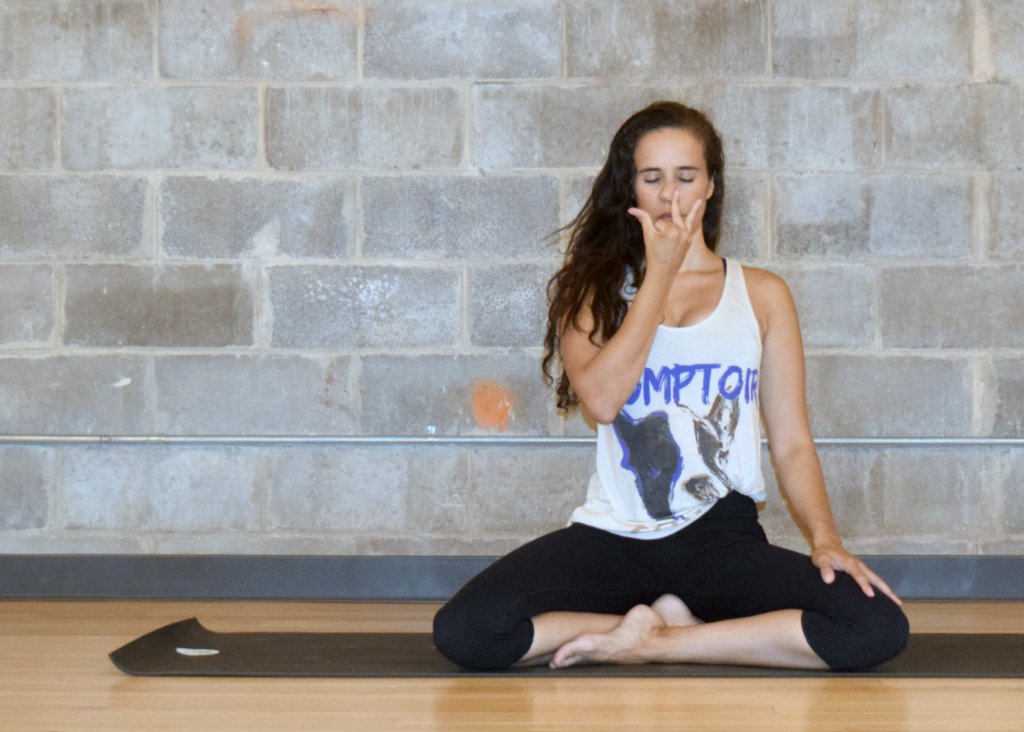
This is a very simple, yet very effective breathing exercise. It’s most commonly used in preparation towards deeper meditative practices.
How to do it:
Using your right hand, tuck-in your index and middle finger (so that your ring finger, pinky and thumb are extended). You will use your ring finger and thumb to open and close nostrils alternately.
Close your left nostril with your ring finger, inhale through the right
Close your right nostril with the thumb, closing both nostrils and holding the breath for as long as comfortable
Exhale through the left
Inhale through the left, hold the breath
Exhale through the right
Inhale through the right, hold the breath
Exhale through the left
Complete a few rounds (about 1-3 minutes)
FREE Yoga Nidra for Anxiety
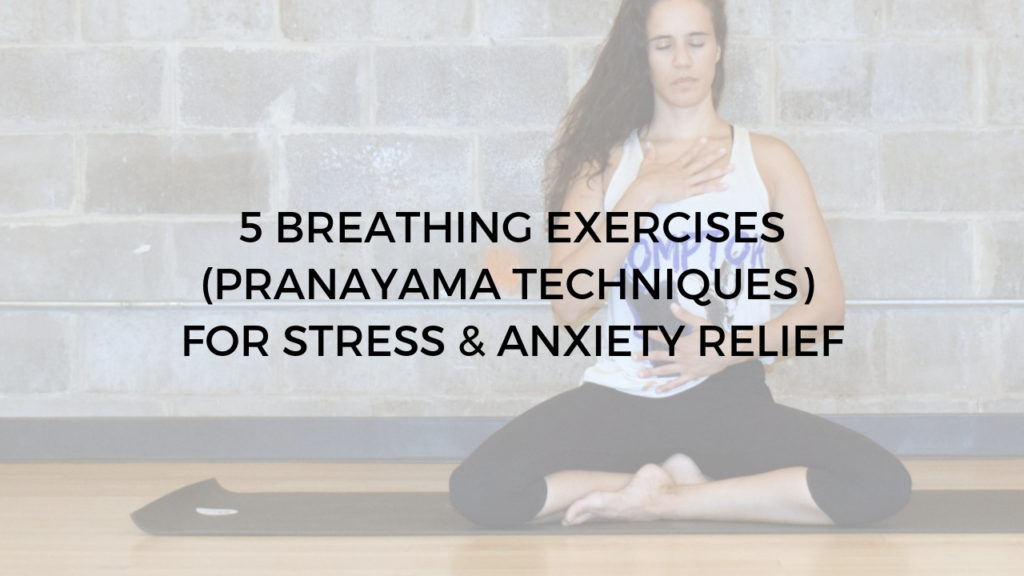
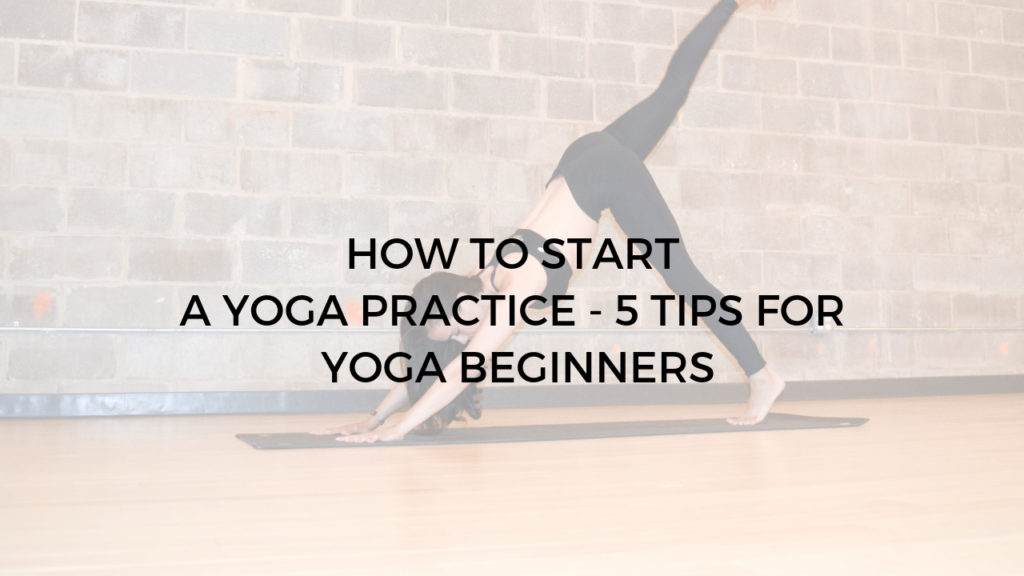
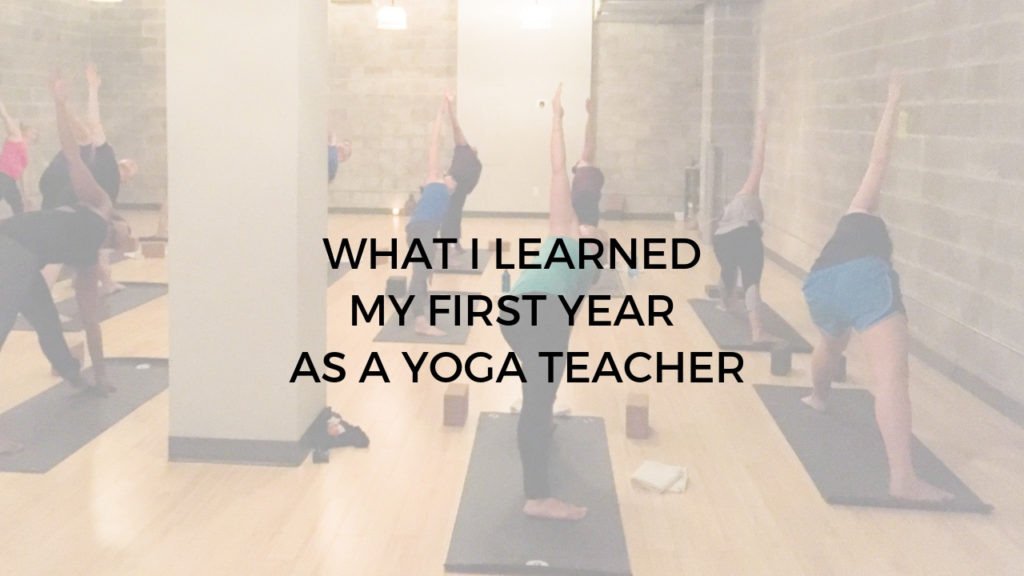
Pingback: 10 Evening Habits For Better Sleep - Argentina Rosado Yoga